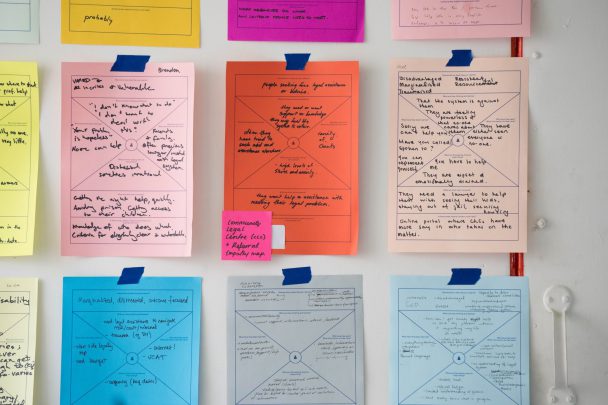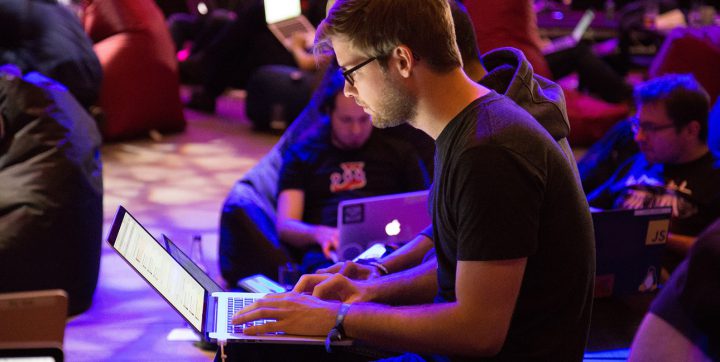Gamification is the use of game mechanics, in a ludic way, in different contexts to increase participation and generate engagement and commitment on the part of potential users.
1. What is Gamification?
Gamification is the use of gaming mechanisms to solve practical problems or foster the engagement of a specific public, within gaming scenarios unrelated to the entertainment industry. The games represent a modern view of applying new technologies and methodologies to a corporate environment, aiming to support the development of the business objectives.
Several games include, in their game mechanics elements like points, awards, ranking tables, rules and other types of incentives that make the gamification dynamics captivating. In this way, the methodology rests on the natural predisposition of human beings to interact more profoundly with activities framed within a game construct.
In this way, the use of games as part of the framework of corporations inserts a social component into the operations responsible for hitting higher and more significant levels of engagement. Currently, diverse areas of knowledge have enjoyed the benefits of the implementation of a set of gamified practices. Amongst the greatest adherents of Gamification are fields such as health, education, public policy and sports.
Subscribe to receive our updates
Fill the form to receive our freshest content
2. Gamification: why does it matter to your company?
Before the age of Digital Transformation, the operational structure of companies was still the same as it was in the 19th century, based on vertical hierarchies, bureaucratic documentation and in the specialization of labor to achieve the epitome of efficiency in results. This model demands well-defined roles and responsibilities, exact processes and a management based on control.
These traditional methods did bring security and good results. However, the intense and consistent fluctuation of volatile markets has altered the organization of companies. These days, companies need to able not only to change but to quickly adapt to respond to the demands of the market.
These drastic changes to the business models of companies have a direct impact on employees and their productivity. And to reduce impacts on people – the engines that make change happens – Gamification can be a great ally.
The evolution and sophistication of technological methods and business strategies have created the possibility of organizing work differently – through a social aspect. Now, the adoption of innovative techniques proves efficient to awaken the attention and commitment of the teams. And games are the platform that best fits as an instrument in this new order.
Download our book about Gamification and understand everything about the topic
3. Why invest in Gamification?
The experiences of the implementation of Gamification in several business contexts contribute to a view that competition is an intrinsic activity of human behavior. In a game, when the rules and aims are clear, the observed result is almost always that of players engaged in finding innovative solutions to challenges.
Apparently, we do not play because we want to, but because we need to. And this same behavior, being replicated in the corporate environment, has the capacity to revolutionize the way one thinks and performs one’s professional activities.
One of the main uses of gamification in a business context relates to client loyalty, using some platform whose game mechanics offers rewards, gifts or virtual currency for every aim achieved. This makes it so the client is constantly stimulated to interact with that environment.
4. How Gamification works in companies?
Gamification, through its power to communicate aims and give feedback in real time, is an excellent tool to increase the perception of the capacity of professionals. It is greatly used in the context of Managing Change and allows for a softer structural modification, making it so that the challenges of transition, as well as the daily tasks, become simpler and fun.
It is worth pointing out that Gamification is not only a game. While games are used merely for fun, Gamification uses specific techniques for a broader understanding of internal operational processes, enabling new knowledge, an increase in individual and collective performances.
Gamification is note represented only in a score board. It involves something much larger and conceptual: thinking. The game mechanics encourages collaborators to seek knowledge that improves their techniques and helps them reach the objectives and win the competitions established as aims.
Today, companies are invariably run by the symbiotic relation between the constant oscillations in the market and the consequent need to adapt to overcome them.
The more visible side of this battle is knowing the organizational culture. It is possible to assert that the processes structured over time end up being confused with the history of the company and reflecting the customs of people who helped right it. Therefore, it is natural to find occasional resistance to change whenever the volatility of the market requires new directions.
To stay profitable and overcome the common missteps, companies often need to challenge paradigms which are essential to their running well. These paradigms have the power to redefine not only the rhythm of daily operations, but also the directions to be followed over the coming years.
Considering a highly competitive scenario, coming from the increased level of awareness of consumers about their desires, it becomes unimaginable to sustain a corporate strategy that is not aligned with the constant search for innovation. It is in this context that Gamification comes in.
Every day, ancient market giants witness the growth of collaborators who belong to the Y Generation (people born between the 80s and 90s) in their ranks. When faced with facts, it seems evident that there is also a growing need to change governance within companies – or at least consider the possibility.
Within the suggested context, the inclusion of gamification and its game mechanics in professional relations appears as an efficient way to create engagement, stimulate cooperation amongst employees and ease possible discomforts.
According to information released by the Gartner Group, 70% of the largest companies in the world use Gamification to develop skills. In general numbers, the current investment of companies in the methodology is of almost R$ 6 billion. The methodology encourages individual and organizational behavioral changes by means of games (board, apps and augmented reality).
In this scenario, the adoption of the so-called Serious Games has become increasingly more widespread in companies, as an alternative to training by other companies.
The Serious Games are electronic games which have as their main objective to train employees – from shop salesmen to doctors – through a virtual environment. The intention is that the digital ecosystem simulates, in a ludic way, a real activity.
Those who are more unaware, may think this is a joke. However, research indicates that collaborators who have been through gamified training, with ludic elements, retain 20% more knowledge. Aside from this, the fun factor makes it so professionals prefer to learn by means of Gamification.
Many of the tasks performed daily in companies reflect customs acquired by their employees over the years and the procedural routines become habits. However, in a scenario of constant change, keeping collaborators engaged and motivated is key to maintaining productivity.
The implementation of Gamification in companies ends up also being an asset with regards to increasing the productivity of teams. Through the game mechanics, boring tasks, oftentimes indispensable to the good running of the business, gain a new dynamic – more fun and fluid.
Engagement is directly related to the increase in productivity and revenues. According to Gartner, the companies that implement gamification show an average improvement of 20% in employee engagement with productive processes, as well as experiencing a growth of up to 250% in revenues in comparison to competitors who do not yet make use of this strategy.
The engagement of collaborators is the kind of challenge that CEOs of any company have to face, usually at the time of expanding the business. Offering training, improve process management, concentrating efforts in retaining talent and perfecting leadership development programs are some of the activities that deserve the attention of executives. With the market constantly evolving, and increasingly absorbing technological resources, innovation through gamification can be a good strategy to keep employees stimulated.
Traditional methods can offer security and good results, but when a company adopts innovative techniques it awakens the attention and commitment of the team.
Recently, a large retail brand decided to change the systems of the entire ecosystem of stores. The change would represent an impact in the routine of about nine thousand collaborators. Despite being considered a high-risk movement, the company opted for a gamified solution to replace traditional training.
Undertaking the management of the change in the corporate environment is a challenging task. It is essential to think so as to reconcile team engagement, the competitive advantage of the company and customer loyalty. In this context, gamification comes as a simple and innovative methodology to help conduct the processes and reduce negative impacts in the organizational changes.
Applying the game mechanics in the corporate world is an attractive way to involve professionals with different profiles in the activities of the company, as well as reduce resistance to change. And the familiarity on the part of collaborators with games makes implementing its concepts in the company’s strategy an even more tangible task.
The application of Gamification proves effective also in the context of sales, for instance. The sales departments of companies need to be competitive by nature and force collaborators to improve daily. But the, almost always, non-linear work dynamics needs interference from managers and impedes faster actions.
When the methodology is used to redraw this process, it allows for the construction of a continuous modus operandi, without the need for so many interferences, interruptions in the workflow or blockages. The solution allows people to become empowered within the teams and stay intrinsically motivated to out-do themselves daily.
5. How to apply Gamification?
Gamification has different aims within organizations. Currently, the methodology is already used to produce solutions to retain clients, in activities to engage internal teams and to replace traditional trainings, reducing costs.
The games also participate actively in the process of managing change within traditional corporations that are going through the Digital Transformation.
In this way, the implementation of games in business can be the ideal strategy for companies willing to innovate. But how to implement the process?
Check-out some steps to implement Gamification in companies:

Detect the problem and understand the context

Know the players

Define the guiding criteria and game mission

Develop the ideas for the game
After understanding the scenario, the mapping of player characteristics and the definition of the guiding criteria and mission of the project, it is time to generate ideas to determine the format of the game. Every game has a story. Those most in love with electronic games will remember the adventures of the plumber Mario to save the princess (Mario Bros, Nintendo), of the trajectory of the fighters in Mortal Kombat to save the Earth (Midway Games) or the cybernetic hero Master Chief (Xbox, Microsoft). These are some ludic examples that the script matters. And it is no different in the corporate process of Gamification. In this way, to construct an attractive script for a game, 3 basic questions are raised:
- Which story will be told using game mechanics?
- What will be the theme of the game?
- What will be the game’s esthetics?
The brainstorming sessions are a very effective tool when coming up with a game script that is compatible with the mission and reality of the company. The technique allows for the generation of a number of ideas, with quantity taking precedence over quality. After the sessions, it is possible to assess and prioritize the best solutions, until one comes to a game format that stimulate participants and fulfills the defined objectives.

Creating a game mechanics

Test in low, medium and/or high fidelity

Implementation and monitoring







